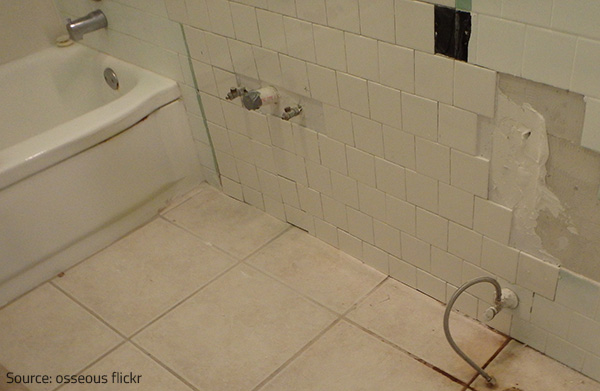What're your ideas with regards to How to Prevent Bathroom Water Damage?

The bathroom is very vulnerable for damp build-up and prospective water damages because of the constant use water in it. This write-up supplies basic evaluation techniques to aid identifying water damages risks.
The regular use water in the shower room makes it extremely at risk for moist buildup and prospective water damage. By inspecting it regularly, you can reduce water relevant damages.
The complying with set of evaluations is easy to do and also need to be done when in every three months in order to maintain your shower room in good shape and also to avoid possible water problems triggered by the tub, the shower, pipeline joints and also plumbing, sinks, closets, and also the commode
Do not overlook carrying out these examinations and also be comprehensive while performing them. Remember that these straightforward assessments can save you a lot of cash by providing early indicators for water damages
Sinks as well as Cabinets
Sinks and cabinets are exposed to wetness as well as humidity daily as well as are often ignored. Check regularly under the sink as well as on the countertop over it. Repair any type of drip in the trap as it might suggest drain issues. Take a look around the sink, sluggish draining pipes might suggest an obstructed drainpipe. Replace sink seals if they are split or loosened.
Tub and Shower
The shower as well as tub require special attention as well as upkeep. Inspect the ceramic tiles as well as change if cracked. See to it that there is no missing out on grout between the floor tiles. Check and change cracked caulking at joints where the wall surfaces fulfill the flooring or the tub. Blocked drains and pipelines troubles will certainly prevent the bathtub from drying and also might suggest serious troubles beneath the tub. Talk to an expert instantly to stop structural damage. Take notice of stainings or soft areas around the bath tub walls as they may suggest an internal leak.
Plumbing
Signs for water damage are hard to find considering that many pipes are installed inside the wall surfaces.
Pay unique interest to floor covering and walls wetness and spots as they might indicate an undetectable plumbing trouble. Check moisture degrees in adjoining rooms too.
The Toilet
The bathroom is a prone water junction. Examine the water lines and look for leaks around the bathroom seat, in the hose, and under the water container. If you find any kind of indications of moisture on the floor around the bathroom, check for leakages in the toilet edge as well as tank seals.
Understand that hanging toilet dish deodorants enhances the possibilities for obstructions.
Water Damage Signs In The Bathroom To Avoid Cleanup
Musty smell
This is one of the easiest signs to catch because musty smells are so odorous. The damp, earthy, moldy smell should be a big red flag. The smell will develop when moisture gets trapped in surfaces, and begins to facilitate mold growth. Leaking pipes under cabinets, inside walls, and behind shower fixtures will cause moisture to stay trapped and not dry, which will lead to mold growth and spread. As soon as you notice any musty smells in your bathroom, have it checked for hidden water damage and cleanup signs.
Visible mold
If the smell isn’t there to give it away, sometimes you will actually see mold growth. Finding mold in your bathroom is a serious problem, because mold is very harmful to your health. By the time mold growth is visible, it also means that water damage has already occurred and been present for some time. The only way the mold problem can be resolved is to find the source of the moisture and get it stopped. To safely and adequately remove mold, you need to have professionals handle the remediation. Do not waste any time in getting mold problems addressed, fixed, and sanitized so that you can protect you and your family from the many respiratory symptoms caused by mold exposure.
Damaged floors
Bathroom floors should be able to withstand some exposure to water while still remaining in good condition. However, when excess exposure or water leaks occur, they will begin to damage even the most water-resistant flooring. If you notice any cracking, bubbling, staining, or warping on your bathroom floors, there is probably a water leak somewhere causing the distortion. If you notice areas of the floor have become softer, or even have a spongy feeling, there is probably damage to the subfloor. Subflooring is typically made up of plywood. When plywood is exposed to water or moisture, it will absorb it. Once it has become saturated, the weight of the excess water will cause the wood to swell and soften. Check the floors in your bathroom frequently to catch any of these sings before they lead to damaged subflooring.
Changes on walls
When water leaks behind walls, it will cause changes in the drywall. Peeling plaster, blistering paint, and soggy wallpaper are all good indicators that excess water is building up behind the wall. Water leaking behind drywall will cause it to swell and be soft to the tough. If you start to notice gaps along the trim of your walls, or where tile meets the wall, it could also be a strong indicator that there is a leak behind the wall. Any changes, distortion, or damage on the walls should be evaluated as soon as you notice it to prevent further water damage and cleanup.

Do you like more info about How to Fix a Water Damage Bathroom? Make feedback down below. We'd be glad to hear your views about this piece. We hope that you visit us again soon. Sharing is good. Helping others is fun. Thank you for your time. Don't hesitate to pay a visit to our site back soon.
Book Today